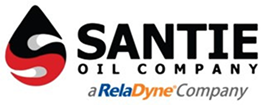There have been changes by the Federal Highway Administration (FHWA) to the minimal design standards for states to be able to resurface, restore, and rehabilitate projects on freeways. According to a 2017 Future Market Insights report, over $4 billion worth of metalworking fluids is thought to be consumed by lubricating transportation equipment across the globe.
Structural Welding Code
The FHWA has refined the welding code to cover the welding of miscellaneous metal components for light poles, sign supports, and railings. This item is not covered under the Bridge Welding Code. The requirements contained in the Structural Welding Code refer to welded connection design that is composed of tubular or nontubular products. The code also includes the tests to determine performance qualification for welders, tack welders, and welding operators. This test must be passed in order to weld based on the code. In addition, the code has general fabrication and erection for base metals, welding technique, material preparation, metalworking, and weld repair.
Metalworking Oil
A toxic chemical has been found in cutting oil used by metalworking facilities. The Environmental Protection Agency (EPA) is broadening the investigation of this chemical. This is one of 10 chemicals that a final risk evaluation has been issued on to promote chemical safety. This study is still underway in reference to metalworking oil, and determinations are still to be made about the toxicity of this oil.
New Structural Welding Code for Steel
This code includes the requirements needed to erect and fabricate structures of welded steel. These codes take a holistic approach to outlining the welds and specific connections. For example, this has groove welds, plug and slot welds, and fillet welds. In addition, this code includes many other considerations like prequalified welding procedure specifications and fatigue stress design parameters. Finally, this code contains information about contract documents and details about particular provisions in the contracts.
Steel is marked by specific attributes. It is influenced by varying properties, including density, melting point, strength, hardness, and thermal conductivity. When you are considering metalworking, it is essential that you understand the standards and regulations around it when it comes to using base metals, welding techniques, and material preparation. You should be sure you understand the changes in the codes before you begin any type of metalworking.

